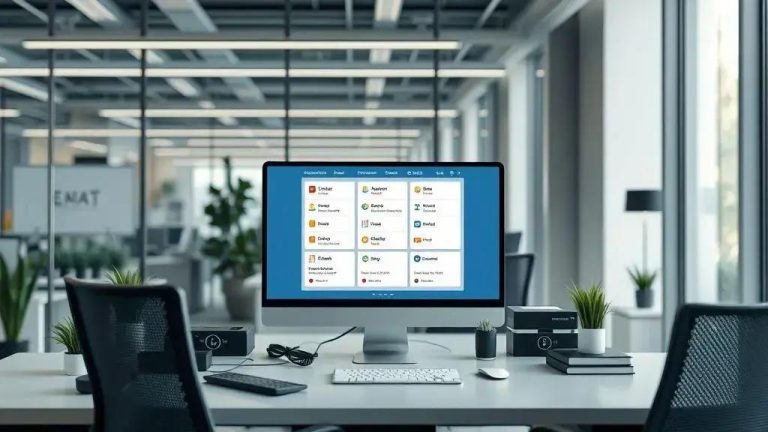Effectively managing and updating course categories within the Eduma theme via the LearnPress dashboard is essential for maintaining a well-organized online learning platform. Regularly editing category details like names, slugs, descriptions, and parent relationships ensures students can easily navigate and find relevant courses, significantly enhancing the overall user experience. This proactive approach to course categorization also plays a vital role in SEO, improving your Eduma site’s visibility in search results and attracting a broader audience of potential learners.
If you’re working with the Eduma theme, you might wonder how to effectively organize your courses. This guide highlights the significance of structuring course content into categories and provides practical steps for implementing categorization, ensuring a smoother experience for both educators and learners.
Importance of Course Categorization
Organizing your online courses effectively is super important, especially when you’re using a powerful theme like Eduma. Think of course categorization as putting your books on shelves in a library. If all the books were just piled up, finding what you need would be a nightmare. The same goes for your online learning platform. When courses are neatly grouped into categories, it makes everything much easier for everyone involved. It helps students find exactly what they’re looking for without getting lost or frustrated. This simple act of organizing can make a huge difference in how people use and enjoy your website. It’s not just about making things look tidy; it’s about creating a smooth and logical path for learning. A well-categorized site feels professional and user-friendly, which encourages students to explore more and stay longer. This can lead to more course enrollments and a better reputation for your educational platform. So, taking the time to set up good course categories is a smart move for any Eduma user.
Making it Easy for Your Students
One of the biggest reasons to use course categories is to improve the student experience. Imagine a student comes to your site wanting to learn about web development. If you have a “Web Development” category, they can click on it and instantly see all related courses. This saves them time and effort. Without categories, they might have to scroll through dozens or even hundreds of courses, many of which aren’t relevant to their interests. This can be very frustrating and might even make them leave your site. Clear categories act like signposts, guiding students directly to the content they want. This makes your Eduma platform much more intuitive and enjoyable to use. When students have a good experience, they are more likely to enroll in courses, complete them, and even recommend your platform to others. It builds trust and shows that you care about their learning journey. Good organization helps students feel in control and makes their search for knowledge much more efficient. It’s all about making their path to learning as smooth as possible.
Think about how you shop online. You use categories to narrow down your search, right? The same principle applies here. Students appreciate a well-structured site where they can quickly filter courses by subject, skill level, or even instructor. This level of organization is crucial for a positive learning environment. It helps prevent information overload and allows students to focus on what matters most to them. When your courses are easy to navigate, students are more likely to explore different topics and discover new interests. This can lead to them taking more courses than they initially planned. So, investing time in creating thoughtful course categories directly benefits your students and keeps them engaged with your Eduma platform.
Better Organization for You and Your Team
Course categorization isn’t just for students; it’s a huge help for you and your team too. As your online learning platform grows, you’ll add more and more courses. Without a good system, managing all that content can become a real headache. Categories provide a clear structure for your course library. This makes it much easier for administrators to add new courses, update existing ones, and keep track of everything. You can quickly see how many courses are in each subject area, identify gaps, or even spot areas where you have too many similar courses. This kind of overview is vital for strategic planning and content development. It helps you maintain a consistent quality across your offerings and ensures that your course catalog remains balanced and relevant.
Imagine trying to find a specific course among hundreds without any categories. It would be like searching for a needle in a haystack! With categories, you can quickly jump to the relevant section. This saves a lot of time and reduces the chances of errors when managing your content. It also helps new team members get up to speed faster. They can easily understand the structure of your course offerings and where new content should fit. This efficiency is key for any growing educational business using the Eduma theme. It allows you to focus more on creating great content and less on administrative chaos. A well-organized backend translates to a smoother front end for your students, creating a win-win situation for everyone.
Furthermore, categories help in reporting and analytics. You can easily track which categories are most popular, which ones need more attention, or which ones are performing best. This data is invaluable for making informed decisions about your course strategy. It helps you understand student demand and tailor your offerings to meet those needs. So, while it might seem like a small detail, proper course categorization is a foundational element for effective content management and strategic growth on your Eduma site.
Boosting Your Site’s Visibility (SEO)
Did you know that organizing your courses can also help people find your website through search engines like Google? This is where Search Engine Optimization, or SEO, comes in. When you create clear course categories, you’re essentially telling search engines what your website is about. For example, if you have a category called “Digital Marketing Courses,” Google understands that this section of your site is highly relevant to people searching for “digital marketing courses.” This can help your pages rank higher in search results, bringing more potential students to your Eduma platform.
Each category page can become a landing page for specific search queries. You can optimize these pages with relevant keywords in their titles, descriptions, and the content within the category itself. This makes your site more discoverable. Without categories, all your courses might just appear as a long list, making it harder for search engines to understand the specific topics you cover. Categories provide a structured hierarchy that search engines love. They help search engines crawl and index your site more efficiently, leading to better visibility. More visibility means more organic traffic, which means more potential students without having to pay for ads.
Moreover, well-defined categories improve internal linking. When you link from a course to its category page, or from one category to another related category, you’re building a strong internal link structure. This helps distribute “link equity” throughout your site and signals to search engines which pages are important. It also keeps users on your site longer, exploring related content, which is another positive signal for SEO. So, by simply organizing your courses into logical categories within your Eduma theme, you’re not just helping your students; you’re actively working to improve your site’s performance in search results and attract a wider audience. It’s a powerful, yet often overlooked, SEO strategy that can yield significant long-term benefits for your online learning business.
Think of it this way: every category page is an opportunity to rank for specific keywords. If someone searches for “online photography classes,” and you have a well-optimized “Photography Courses” category, your site has a much better chance of showing up. This targeted traffic is incredibly valuable because those visitors are already interested in what you offer. They are more likely to convert into enrolled students. Therefore, don’t underestimate the power of thoughtful course categorization as a fundamental SEO tool for your Eduma-powered educational website. It’s a foundational step towards attracting and retaining a larger student base.
Creating Categories from LearnPress Dashboard
When you’re ready to organize your courses in Eduma, the LearnPress dashboard is where you’ll do it. It’s pretty simple to create new course categories there. This helps students find courses easily and keeps your site tidy. Think of it as setting up clear sections in a store. If everything is in its right place, customers can quickly find what they need. The same goes for your online courses. Well-defined categories make your Eduma platform much more user-friendly. They guide your students through your content in a logical way. This makes their learning journey smoother and more enjoyable. Creating these categories is a fundamental step for any successful online learning site. It shows attention to detail and a commitment to a good user experience. This simple action can greatly improve how students interact with your course offerings. It also lays the groundwork for better site management and even helps with search engine visibility. So, let’s dive into how you can easily set up these important course categories right from your LearnPress dashboard.
Finding the Categories Section in LearnPress
First things first, you need to log into your WordPress admin area. This is the backend of your website where you manage all your content. Once you’re logged in, look at the left side of your screen. You’ll see a menu with various options. Find the one labeled ‘LearnPress’ and click on it. This will open up a sub-menu with more choices related to your courses. From that sub-menu, you’ll want to click on ‘Courses’. This takes you to the main course management area. Now, within the ‘Courses’ section, you’ll see another set of options. Look for ‘Categories’ and give that a click. This page is your control center for all course categories. It’s where you’ll see existing categories and where you can add new ones. Knowing this path is the first important step in managing your Eduma courses effectively. This navigation is designed to be straightforward, even if you’re new to WordPress or LearnPress. Taking a moment to familiarize yourself with these steps will save you time later on. It’s a core part of keeping your online learning environment well-structured and easy for both you and your students to use. Remember, good organization starts with knowing exactly where to go in your dashboard. This simple navigation ensures you can always access and update your course categories quickly and without hassle. So, take a deep breath, click through, and get ready to make your Eduma site even better organized for everyone.
Adding a New Course Category Step-by-Step
Once you’re on the ‘Categories’ page, you’ll notice a form on the left side of your screen. This is where you’ll input the details for your new course category. The very first field you’ll see is ‘Name’. This is super important because it’s the title your students will see on the front end of your Eduma website. So, you’ll want to pick a name that is clear, descriptive, and easy to understand. For example, if you have courses about building websites, a good name might be “Web Development Basics” or “Advanced JavaScript.” Make sure the name clearly tells people what kind of courses they’ll find inside this category. A well-chosen name also helps with SEO, as search engines use these names to understand your content. This means more people can find your courses when they search online. For instance, if you name a category “Cooking,” it’s very clear. If you name it “Culinary Arts,” it’s also clear but might attract a slightly different audience. The goal is to be precise and helpful. Think about what words your potential students would type into a search bar. Using those words in your category names can really boost your visibility. Keep it concise, but make sure it’s informative. This name is the first impression students get of your course grouping, so make it count. It’s a small detail that has a big impact on user experience and search engine ranking. So, choose wisely and make sure it accurately reflects the courses it contains. This simple step is crucial for effective course management within your Eduma theme.
Next, you’ll find the ‘Slug’ field. A slug is basically a web-friendly version of your category name. It usually uses only lowercase letters, numbers, and hyphens instead of spaces. For example, if your category name is “Web Development Basics,” the slug might automatically become “web-development-basics.” This is important because it forms part of the URL for your category page. A clean, descriptive slug is excellent for SEO. It helps search engines understand the content of the page, which can lead to better rankings. Most of the time, LearnPress will create this slug for you automatically based on the name you enter. However, you do have the option to edit it if you want to make it shorter or more specific. Just make sure it still makes sense and accurately reflects the category’s content. It’s best to avoid using special characters or creating very long slugs. Short and sweet is usually the best approach for URLs. A good slug makes your website look more professional and helps with search engine visibility. It’s a small detail that contributes to a better overall user experience and stronger SEO for your Eduma courses. So, while it’s often handled automatically, it’s always worth a quick check to ensure your slugs are clean and effective for your online learning platform.
After the slug, you’ll see the ‘Description’ field. This is where you can write a brief explanation of what this category is all about. Sometimes, this description might show up on your category page on the front end of your Eduma site, depending on how your theme is set up. Even if it doesn’t appear publicly, it’s still very useful for your own organization and for your team. You can use it to add notes for yourself or other administrators about the purpose of the category, what types of courses should be included, or any specific guidelines. Think of it as an internal memo or a quick reference guide. It helps keep everyone on the same page and ensures consistency in your course offerings. While not always visible to students, a clear description can help you maintain a well-structured and coherent course catalog. It’s a good practice to fill this out, even if it’s just a few sentences. This detail helps to reinforce the purpose of each category, making your Eduma platform more manageable in the long run. It’s a quiet helper in keeping your educational content organized and understandable for your team, ensuring that your course structure remains logical and easy to manage.
You’ll also find the ‘Parent Category’ option. This is a powerful feature that lets you create a hierarchy for your categories. Imagine you have a broad subject like “Programming.” Underneath that, you could have more specific sub-categories such as “Python,” “JavaScript,” and “PHP.” To set this up, you would first create the main “Programming” category. Then, when you create “Python,” you would select “Programming” as its parent category. This creates a logical structure that’s super easy for students to navigate. It helps them drill down from broad topics to more specific ones, making their search for courses much more efficient. A well-structured hierarchy makes your Eduma site feel more professional and organized. It also helps search engines understand the relationships between your content, which can be great for SEO. Think of it like folders on your computer; you put related files into subfolders to keep everything neat and easy to find. Using parent categories is a powerful way to manage a large number of courses without overwhelming your students. It provides a clear path for exploration and learning, making your Eduma platform more user-friendly and efficient. So, don’t shy away from using this feature to build a logical and intuitive course structure for your online learning environment.
Finally, you might see an option for a ‘Thumbnail’ or ‘Category Image’. Many themes, including Eduma, allow you to add a small image to represent your category. This can make your category pages much more visually appealing and help students quickly identify what each category is about. A good image can grab attention and make your site look more polished and engaging. If this option is available, choose an image that clearly relates to the category’s content. Make sure it’s high-quality and fits well with your overall site design and branding. Visuals can play a big role in user engagement. They help break up text and make the browsing experience more enjoyable and intuitive. So, if your Eduma setup allows for category images, consider using them to enhance the look and feel of your course listings. It’s another way to make your online learning platform stand out and provide a richer experience for your students. After you’ve filled out all the necessary fields, the last step is to click the ‘Add New Category’ button. Your new category will then appear in the list on the right side of the page. You can always go back and edit it later if you need to make changes or update any details. This simple process ensures your Eduma courses are always well-organized and easy to access for everyone.
Checking Your New Categories
After you click ‘Add New Category’, your newly created category should instantly appear in the list on the right side of the LearnPress Categories page. It’s always a good idea to quickly check this list to make sure everything looks correct. You can verify the name, the slug, and see if the course count is accurate (though it will likely be zero initially). This quick check helps confirm that your category was created successfully within your Eduma platform. Then, it’s a smart move to visit the front end of your Eduma website. Navigate to where your course categories are typically displayed. This might be on your main courses page, in a sidebar widget, or within a specific menu. See how the new category looks to your students. Does the name make sense in context? Is it in the right place if you used a parent category? This step is important because it lets you experience your site exactly as a student would. If something looks off, or if you spot a typo, you can easily go back to the LearnPress dashboard and make quick adjustments. This ensures your Eduma platform is always presenting its content in the best possible way. Taking these few extra moments to verify your work can prevent confusion for your students and keep your site running smoothly. It’s all part of maintaining a high-quality and user-friendly online learning environment, making sure your course organization is perfect from every angle.
Using the Course Editor to Add Categories
When you’re busy creating or updating a course in your Eduma theme, you don’t always want to jump back and forth between different screens. Luckily, LearnPress lets you add or assign course categories right from the course editor itself. This is super handy because it keeps your workflow smooth and efficient. Imagine you’re putting together a new course on “Beginner Photography.” As you’re writing the lessons, you can decide right then and there which category it belongs to, or even create a new one if needed. This method is all about convenience and making sure your courses are perfectly organized from the moment they’re created or updated. It saves you time and helps keep your Eduma platform neat and tidy. This way, students can easily find your new content as soon as it’s live. It’s a smart way to manage your online courses without breaking your stride. So, let’s look at how you can use the course editor to handle your categories with ease.
Getting to Your Course Editor
To start, you’ll need to log into your WordPress admin area. This is the main control panel for your website. Once you’re in, look at the menu on the left side of your screen. You’ll see an option called ‘LearnPress’. Go ahead and click on that. This will show you a list of LearnPress-related items. From that list, click on ‘Courses’. This takes you to a page where all your courses are listed. You can either click on an existing course to edit it, or if you’re making a brand new course, click on ‘Add New’. Either way, you’ll end up on the course editing screen. This screen is where you put all the details for your course, like its title, description, and lessons. It’s also where you’ll find the tools to manage its categories. Getting to this editor is the first step in making sure your Eduma courses are well-organized and easy for students to find. It’s a central hub for all your course content management. So, take a moment to get comfortable with navigating to this important part of your Eduma site. This ensures you can always quickly access and modify your course details and their associated categories.
Finding the Course Categories Box
Once you’re inside the course editor, you’ll see a lot of different boxes and settings. Don’t worry if it looks like a lot at first. Most of the time, on the right side of the screen, you’ll find a box specifically labeled ‘Course Categories’. This box is your go-to spot for managing how your course is grouped. It usually looks like a list of checkboxes. If you don’t see it right away, it might be collapsed, so look for a small arrow or a title you can click to expand it. Sometimes, if your screen is small, you might need to scroll down a bit to find it. This ‘Course Categories’ box is super important because it directly controls where your course will appear on your Eduma website. It’s like putting a label on a product so customers know which aisle to find it in. Making sure this box is visible and understanding its purpose is key to organizing your courses effectively. It’s designed to be intuitive, allowing you to quickly see and select the categories that fit your course best. This simple box plays a big role in how students navigate your online learning platform. So, take a moment to locate it and understand its function within the course editor. It’s a crucial part of keeping your Eduma content well-structured and accessible for everyone.
Assigning Existing Categories to Your Course
Inside the ‘Course Categories’ box, you’ll see a list of all the categories you’ve already created for your Eduma courses. Each category will have a small checkbox next to it. To assign your current course to one or more of these categories, all you need to do is click the checkbox next to the category name. It’s that simple! For example, if you’re editing a course on “Digital Photography” and you already have categories like “Photography Basics” and “Advanced Techniques,” you can just check both of those boxes. This tells your Eduma theme that this course belongs to both groups. You can select as many categories as are relevant to your course. Don’t be afraid to use multiple categories if a course truly fits into more than one area. This helps students find your course through different paths, which is great for visibility. Just make sure the categories you choose actually make sense for the course content. Over-categorizing can sometimes be confusing. The goal is to make it easy for students to find what they need. This quick selection process is one of the most straightforward ways to organize your courses. It ensures that your content is always where students expect to find it, making your Eduma platform more user-friendly. So, take advantage of this easy method to link your courses to their proper homes within your site’s structure. It’s a fundamental step in maintaining a well-organized and navigable online learning environment.
Creating New Categories On-the-Fly
What if you’re editing a course and realize you need a brand new category that doesn’t exist yet? No problem! The LearnPress course editor has a neat feature for this. Inside the ‘Course Categories’ box, you’ll usually see a link that says ‘Add New Category’ or something similar. Click on this link. A small field will appear, asking for the ‘New Category Name’. Type in the name for your new category, like “Mobile App Development” if that’s what your course is about. You might also see an option to choose a ‘Parent Category’. This is useful if you want your new category to be a sub-category of an existing one. For example, you could make “Mobile App Development” a sub-category of “Programming.” This helps keep your categories organized in a logical hierarchy. Once you’ve typed in the name and selected a parent if needed, click the ‘Add New Category’ button right there. The new category will be created instantly and automatically assigned to your current course. You don’t have to leave the course editor at all! This saves a lot of time and keeps you focused on the course you’re working on. It’s a fantastic feature for maintaining a dynamic and growing course catalog in your Eduma theme. This ability to create categories on the fly ensures that your course organization can evolve as your content does, without any extra hassle. It’s all about making your course management as smooth and efficient as possible, ensuring your Eduma platform remains easy to update and navigate for both you and your students.
Saving Your Course Changes
After you’ve assigned your course to existing categories or created new ones, there’s one super important step you absolutely can’t forget: saving your changes! All the work you’ve done in the ‘Course Categories’ box won’t stick unless you update the course itself. Look for the ‘Update’ button (if you’re editing an existing course) or the ‘Publish’ button (if it’s a new course) on the right side of your screen, usually near the top. Click that button! Once you click it, WordPress and LearnPress will save all the information you’ve entered, including your category selections. If you forget to click ‘Update’ or ‘Publish’ and navigate away from the page, all your category assignments will be lost, and you’ll have to do them again. It’s a common mistake, so always double-check that you’ve saved your work. After saving, it’s a good idea to quickly visit the front end of your Eduma website. Check the course page and the category pages to make sure everything looks correct. Does the course appear under the right categories? Are the new categories visible? This quick check confirms that your changes are live and that your Eduma courses are perfectly organized for your students. This final step is crucial for ensuring that all your efforts in categorization pay off, making your online learning platform as user-friendly and well-structured as possible. So, always remember to hit that save button!
Managing and Updating Course Categories
Keeping your course categories in the Eduma theme up-to-date is just as important as creating them in the first place. Think of your online learning platform as a living thing; it grows and changes over time. New courses get added, old ones might be updated, and sometimes, your teaching focus might shift. Because of this, your categories need regular attention to stay relevant and helpful. If your categories get messy or outdated, it can make your site hard for students to use. They might struggle to find the courses they want, or they could even miss out on great content because it’s not properly categorized. Regular management ensures that your Eduma site remains easy to navigate and professional-looking. It also helps with search engines, making sure your courses can be found by more people. So, let’s dive into how you can keep your course categories perfectly organized and always relevant for your students.
Accessing Your Category Management Area
To start managing your course categories, you’ll need to go back to the LearnPress dashboard. First, log into your WordPress admin area. This is the backend of your website where you control everything. Once you’re logged in, look for the ‘LearnPress’ option in the left-hand menu. Click on it. This will open up a sub-menu. From there, you’ll want to click on ‘Courses’. This takes you to the main course management page. On this page, you’ll see another set of options. Find and click on ‘Categories’. This is the central hub for all your course categories. On this page, you’ll see a list of all the categories you’ve created on the right side. This list shows their names, slugs, and how many courses are assigned to each. This is where you’ll do most of your category management work. Getting to this page is the first step in making any changes or updates. It’s important to know this path well, as you’ll likely visit it often to keep your Eduma courses perfectly organized. This area gives you a clear overview of your current category structure. It’s designed to be straightforward, helping you quickly identify which categories might need some attention. So, getting comfortable with this navigation is key to efficient course management within your Eduma theme.
Editing Existing Category Details
Once you’re on the ‘Categories’ page, you’ll see a list of all your existing categories. If you want to change details for a category, simply hover your mouse over its name in the list. You’ll see a few options appear, like ‘Edit’, ‘Quick Edit’, ‘Delete’, and ‘View’. Click on ‘Edit’ to open the full editing screen for that specific category. This screen looks very similar to when you first created the category. You’ll see fields for the ‘Name’, ‘Slug’, ‘Description’, and ‘Parent Category’. You can change any of these details here. For example, if you want to make a category name clearer, just type in the new name in the ‘Name’ field. If you change the name, it’s a good idea to also update the ‘Slug’ to match the new name. Remember, slugs are the web-friendly part of the URL, and a clean slug helps with SEO. The system usually updates the slug automatically, but it’s good to check. You can also update the ‘Description’ if you want to add more details or clarify its purpose. This is useful for your team or for students if the description is visible on your site. After making any changes, don’t forget to click the ‘Update’ button at the bottom of the page. This saves all your modifications. It’s crucial to hit ‘Update’ so your changes go live on your Eduma site. Regularly reviewing and updating your category details ensures they remain accurate and helpful for your students. This keeps your online learning platform well-structured and easy to navigate, which is great for user experience and search engine visibility. So, take the time to fine-tune your categories as needed.
Reorganizing with Parent Categories
Sometimes, your course structure might evolve, and you’ll want to change how categories are nested. This is where the ‘Parent Category’ option comes in handy during editing. On the category editing screen, you’ll find a dropdown menu labeled ‘Parent Category’. This menu lists all your existing categories. If you want to make the category you’re editing a sub-category of another, simply select the desired parent from this dropdown. For example, if you initially created “Python Basics” as a top-level category, but now you have a main “Programming” category, you can edit “Python Basics” and choose “Programming” as its parent. This instantly moves “Python Basics” under “Programming” in your category hierarchy. This is a powerful way to create a more logical and organized structure for your Eduma courses. It helps students navigate from broader topics to more specific ones, making their search much more efficient. You can also change a sub-category back to a top-level category by selecting ‘None’ as its parent. This flexibility allows you to adapt your course organization as your content grows and changes. Remember to click ‘Update’ after making any changes to the parent category. Reorganizing categories can significantly improve the user experience on your Eduma platform. It makes your site feel more professional and easier to explore. A well-thought-out hierarchy also benefits SEO, as search engines better understand the relationships between your course topics. So, don’t hesitate to use parent categories to keep your online learning environment perfectly structured and intuitive for everyone.
Deleting Unused or Outdated Categories
There might come a time when a category is no longer needed. Maybe you’ve stopped offering courses in a particular subject, or you’ve merged several categories into one. Deleting an outdated category is simple, but it’s important to understand what happens when you do. From the main ‘Categories’ page in LearnPress, hover over the name of the category you want to remove. You’ll see a ‘Delete’ option appear. Click on it. Before it’s permanently removed, WordPress will usually ask you to confirm. This is a good safety measure. When you delete a category, any courses that were assigned *only* to that category will become uncategorized. They won’t be deleted, but they won’t show up under any specific category anymore. If a course was assigned to multiple categories, and you delete just one of them, the course will still remain in its other assigned categories. It’s a good idea to check any courses that were primarily in the category you’re deleting. You might want to assign them to a new, relevant category before you delete the old one. This ensures no courses accidentally get lost or become hard to find for your students. Deleting categories helps keep your Eduma site clean and free of clutter. It makes your category list more manageable and ensures that students only see relevant options. This improves the overall user experience and keeps your online learning platform looking professional. So, while deleting is easy, always think about its impact on your courses first. A little planning can prevent any headaches later on, ensuring your Eduma content remains perfectly organized.
The Impact of Category Updates
Every time you update a category, whether it’s changing its name, slug, description, or parent, these changes immediately affect your Eduma website. For students, a clearer category name means they can find courses more easily. A better-organized hierarchy, thanks to parent categories, helps them navigate your site without getting lost. These improvements lead to a better user experience, making students more likely to stay on your site and explore more courses. From an SEO perspective, updating category names and slugs with relevant keywords can significantly boost your site’s visibility. Search engines like Google use these details to understand what your pages are about. A well-optimized category page can rank higher in search results, bringing more organic traffic to your Eduma platform. This means more potential students finding your courses without you having to spend extra on advertising. However, it’s important to be careful when changing slugs. If you change a slug, the old URL for that category page will no longer work. This can lead to ‘404 Not Found’ errors for users who have bookmarked the old link or for search engines that have indexed it. To prevent this, it’s a good practice to set up a ‘301 redirect’ from the old slug to the new one. This tells browsers and search engines that the page has permanently moved. Many SEO plugins for WordPress can help you manage these redirects easily. Regular management and thoughtful updates to your course categories are vital for the long-term success of your Eduma-powered online learning platform. It ensures your site remains user-friendly, discoverable, and always aligned with your educational offerings. So, treat your categories as a key part of your site’s foundation, deserving of ongoing care and attention.
FAQ – Frequently Asked Questions About Eduma Course Categories
Why is it important to categorize courses in the Eduma theme?
Categorizing courses helps students easily find what they need. It makes your website organized, improves their experience, and helps search engines understand your content better, boosting visibility.
How do I create a new course category using LearnPress?
You can create new categories by going to your WordPress admin area, then navigating to ‘LearnPress’ > ‘Courses’ > ‘Categories’. Fill in the name, slug, and other details there.
Can I add a new category while I’m editing a course in Eduma?
Yes, you can. In the course editor, look for the ‘Course Categories’ box. There’s usually an ‘Add New Category’ link to create one on the spot without leaving the editor.
What is a ‘slug’ for a course category and why does it matter?
A slug is a web-friendly name for your category, usually in lowercase with hyphens. It’s part of the URL and helps search engines understand your page, which is good for SEO.
How do parent categories help me organize my courses better?
Parent categories let you create a hierarchy, like putting ‘Python’ under a main ‘Programming’ category. This makes it easier for students to navigate from broad topics to specific ones.
What should I know before deleting an old course category?
Deleting a category will make any courses assigned only to it uncategorized. Always check those courses first and reassign them if needed to avoid them getting lost or hard to find.









